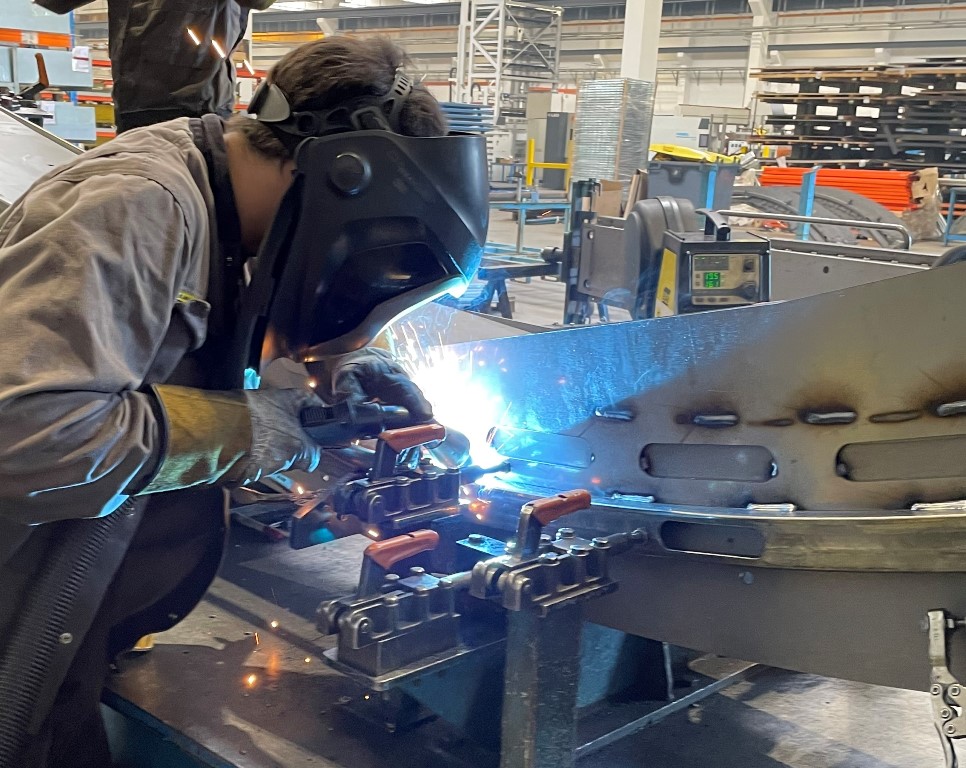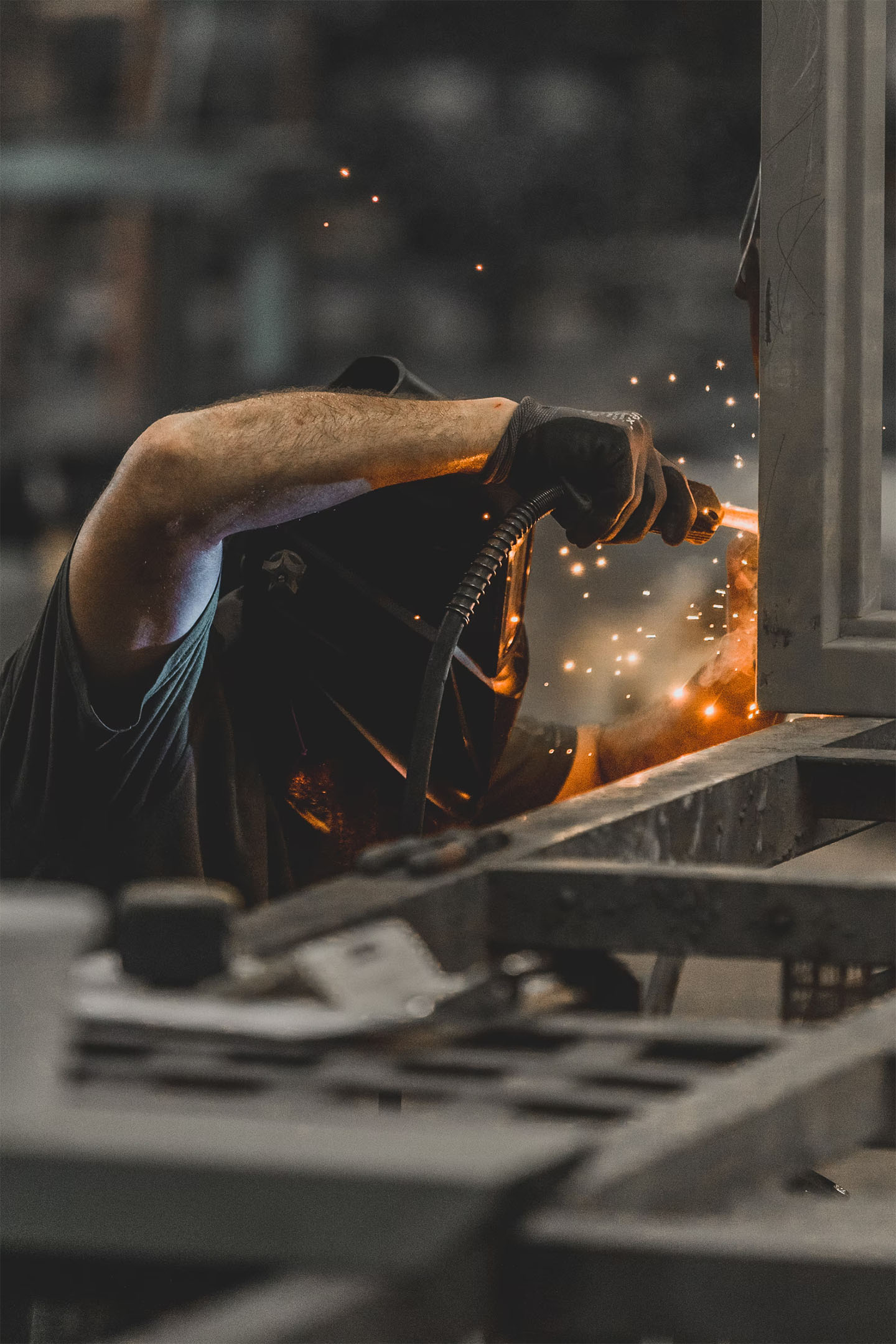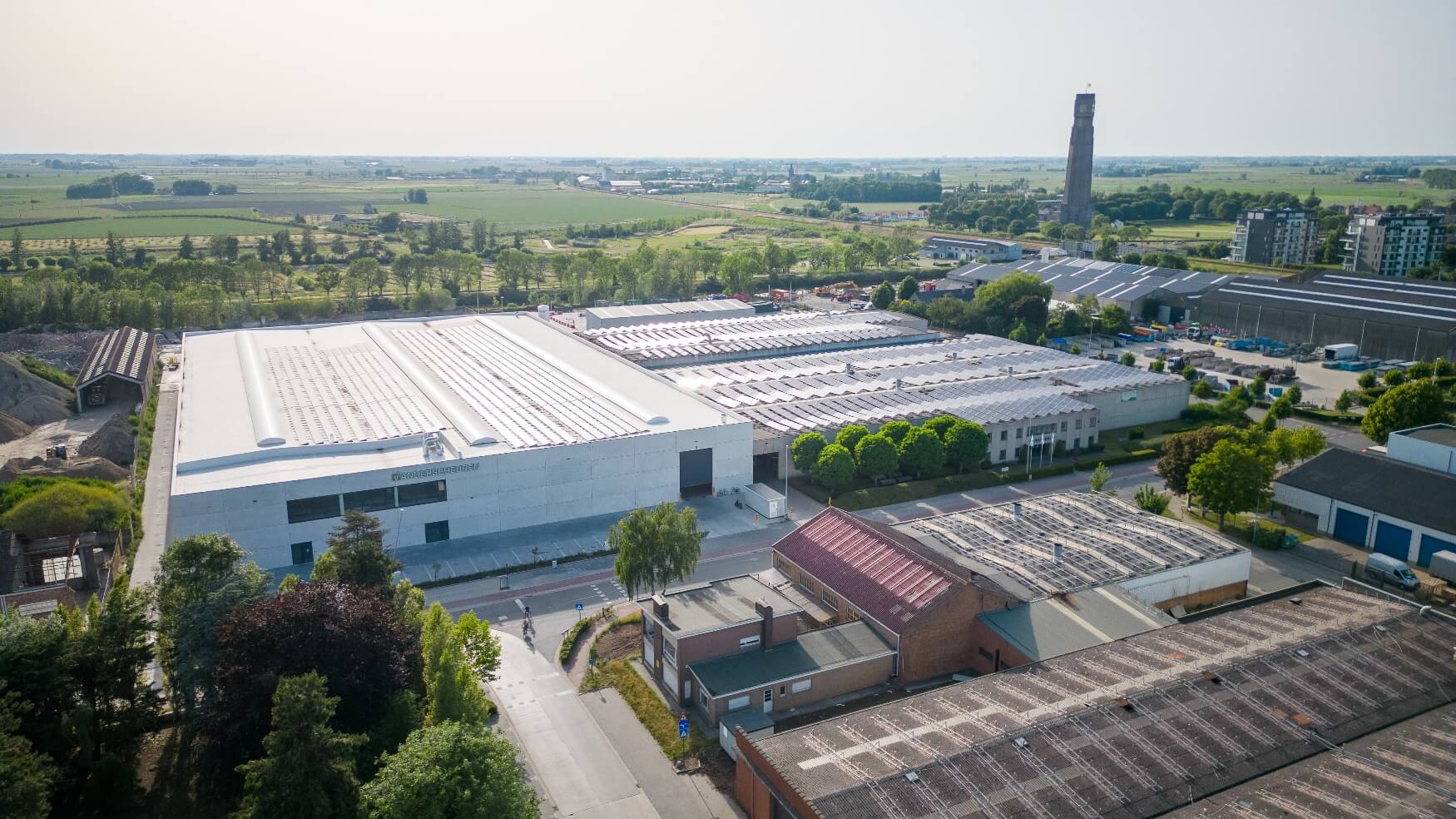Are you a product developer or a machine builder and do you have a part that needs processing? At Vanderscheuren nv we specialise in welding (both manual welding and robotic welding), CNC turning, CNC milling, sheet metalworking, hydraulic cylinders, assembly work and surface treatments. We unburden SMEs and large companies in the Low Countries and Northern France when it comes to the processing of metal parts. This includes semi-finished or fully finished products, as piecework or in series.
Maximum dimensions for manual welding
There are no dimensional restrictions on manual welding at Vanderscheuren nv.

Manual or robotic welding?
Everything depends on the type of metal, the design, the required finish and whether you need series or piecework. Do you have a complicated welding job for us? Is quality an important criterion and do the welding seams need to be beautifully finished? Our certified welders will take care of your welding. They hold UNI-ISO 9606-1 (2017) and EN 1090 certification and are able to apply all welding processes manually and flawlessly. Are speed and efficiency a priority or do you need serial production? In that case, our welding robots will take over the work.

Manual welding in different industries
We perform welding for various industries:
Professional welding at Vanderscheuren nv
A metal structure must be sturdy and reliable. It is therefore crucial that welding is done by a professional. At Vanderscheuren nv we have more than 65 years of experience in metalworking, making us the one-stop-shop for SMEs and large companies in the Low Countries and Northern France. We produce semi-finished or fully finished products, as piecework or in series.
Vanderscheuren nv guarantees superior quality. Our certified welders hold the ISO 9001 quality label and use their own welding tables and floors, with clamping tools, as well as their own stud welding machines and point welding machines. Our employees rigorously check the level of finish of your product in our in-house quality department, from the first unit measurement to the follow-up inspection. We also have our own customer service department, a climate-controlled measurement chamber and a wide range of machinery to produce your product exactly to your specifications and wishes.
1. TIG welding
TIG welding (or “Tungsten Inert Gas welding” in full) is a complicated welding process based on a non-consumable electrode and a consistent current. This arc welding process maintains a stable plasma arc between the workpiece and the electrode. The two do not come into contact with each other in this type of welding. The shielding gas is an inert gas that can withstand high temperatures.
Because TIG welding is such a complex process, the welding is mainly done by our welders. It does not cause weld spatter, which means that the welds are clean and require very little post-processing. You are guaranteed unrivalled quality. Moreover, hardly any harmful welding fumes are released during the process and TIG welding is easy to control because of the manual addition of material. TIG welding is ideally suited for high-alloy steel, such as stainless steel or aluminium, as well as for low-alloy steel having a thin plate thickness. The welding speed is low in the latter case.
2. MIG/MAG welding
Unlike TIG welding, MIG/MAG welding (“Metal Inert Gas welding” and pulse or semi-automatic welding) uses consumable electrodes. Our welders continually apply welding wire during the welding work. A plasma arc or flame arc is created between the welding wire and the workpiece. MIG/MAG welding requires consistent voltage, whereas TIG welding relies on consistent current. MIG/MAG welding is a widely applicable, fast and simple technique, with which high welding speed and efficiency is achieved. The result is high-quality welding with a small risk of inclusions if the drag technique was used. MIG/MAG welding is an ideal welding technique where high production rates and speed are crucial. That is why this process is often automated by using a welding robot.
The difference between MIG and MAG
MIG and MAG are usually conflated, as the method is very similar for both processes. However, they are two different welding processes:
MIG
MIG uses inert gas during welding. The gas mainly consists of argon and contains a specific percentage of helium, hydrogen and a very limited amount of nitric oxide. These additives amplify the arc, but have no impact on the weld pool.
MAG
For MAG, the shielding gas mainly consists of argon, but active gases, such as oxygen and CO2, are added to it. Unlike inert gases, active gases do actually have an impact on the weld pool.
3. Stud welding
Stud welding is an ideal welding techniquefor welding small elements. It is used to attach small metal pins, small bolts, spacers and brackets to material such as sheet metal.
4. Spot welding
Spot welding is a resistance welding process. In this welding process we run a large electric current through a small workpiece surface, resulting in a point-shaped weld or “spot”. We often use this for welding steel, stainless steel, galvanised steel, and aluminium.

